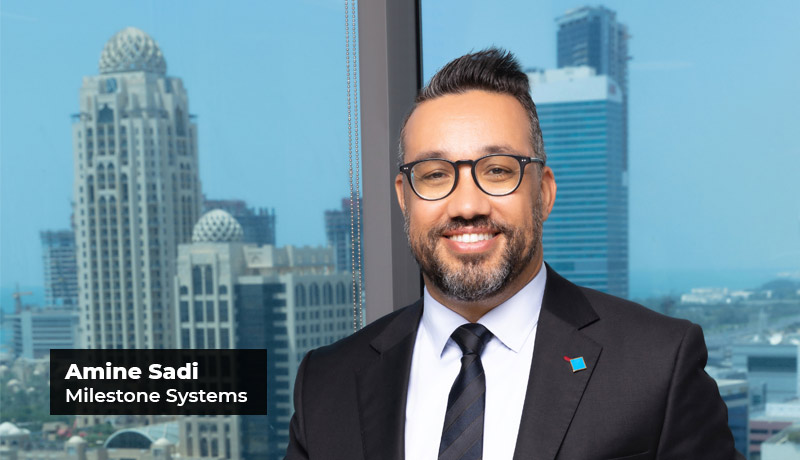
By Amine Sadi – Regional Sales Manager, Milestone Systems, MENAT
Smart cities are no longer a pipe dream; they may soon become a reality. It is becoming an increasingly common notion in major cities throughout the world. A smart city is simply the use of cutting-edge technology such as the Internet of Things (IoT), renewable energy, smart sensors, and other similar technologies.
As cities face issues ranging from traffic congestion to crime as a result of growing urbanisation, city governments are turning to smart technology to help them overcome these obstacles. As a result, video analytics becomes more than just a complementary solution but a growing necessity.
Video analytics is typically focused on improving security as well as operational efficiency, both of which are cornerstones of governments and industry leaders as they strive to offer a safer and liveable environment for residents and investors alike.
The global economy is expected to become considerably lopsided as cities increase, with predictions predicting that more than six billion people would reside in suburbs and urban cities by 2050. This expansion will exacerbate already-existing energy and climate-related concerns. Cities that are safer, more resource-efficient and technologically oriented are required to address these difficulties.
To increase mobility and safety, Intelligent Transportation Systems (ITS) can be implemented in transportation infrastructure. Cameras and sensors embedded in roads and bridges will capture real-time traffic data, which will be relayed back to local government officials, who will be able to analyse long-term traffic trends to influence decisions on strategic transportation plans.
Furthermore, video technology may be integrated into electronic signs to handle activities such as lane opening, shutting, and merging, as well as altering speed restrictions.
To provide for future generations, the UAE government aims to achieve sustainable growth while safeguarding the environment. Large cities such as Abu Dhabi and Dubai are planning and creating smart, sustainable cities that will solve economic and social concerns while also generating long-term advantages.
Abu Dhabi’s Economic Vision 2030 suggests that attempts are being made to move the centre of its economy to information, innovation, and the export of cutting-edge technology, as well as the development of new economic options such as smart cities.
Masdar City, which debuted in 2008 as the world’s first sustainable smart district, is one example of this. It serves as a blueprint for sustainable urban development in the region as the “green print” for future cities. Masdar City’s buildings use 40% less energy, and electricity demand is countered by rooftop solar panels and an on-site solar power plant, an astonishing achievement.
The building of a high-speed Hyperloop transportation service between the emirates of Dubai and Abu Dhabi is one of the most intriguing smart city innovations taking place in the UAE. The Hyperloop, which would use sophisticated electromagnetic technology to travel a distance of 150 kilometres in under 12 minutes, would be an ecologically friendly means of transportation.
Innovative initiatives like the Hyperloop explain why Dubai and Abu Dhabi topped the Middle East and North Africa region in the 2019 IMD Smart City Index, which assesses 102 cities globally. This accolade highlights the UAE’s dedication and success in establishing the digital infrastructure necessary for the country’s transformation into a smart nation. There’s no turning back now.
Using video analytics allows law enforcement, as well as public and private security services, to achieve a significantly faster time to target by enabling rapid inspection and search of vast recordings with potential outcomes. Video analytics software can be run on a central server, a server at the central monitoring station, or at the camera’s edge.
According to industry statistics, the global market for video analytics is expected to increase from US$2,610 million in 2017 to US$11,170 million by 2022, at a 33.7% CAGR.
To make cities and buildings as efficient as possible, video technology may be integrated into algorithms that provide input to other smart elements. Using video technology in traffic management, for example, has a greater and more favourable impact on congestion reduction than constructing new roadways.
The UAE still has a long way to go before categorising all of its towns as “smart,” but forward-thinking architects, industry leaders, pioneers and engineers have laid a solid foundation on which to develop.
